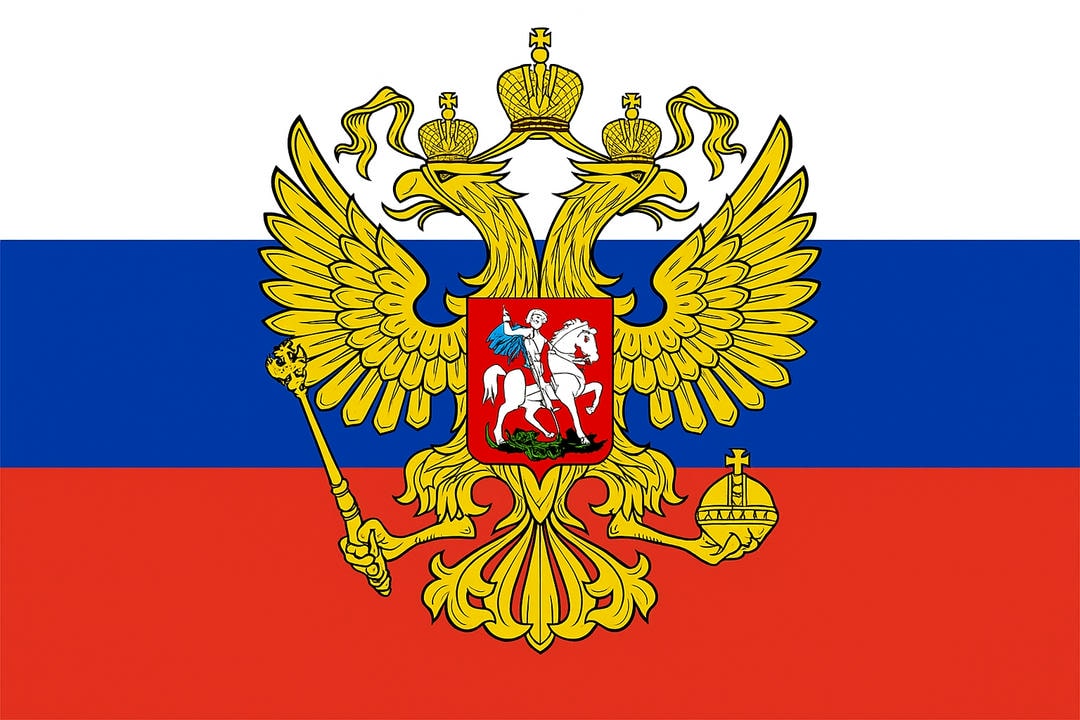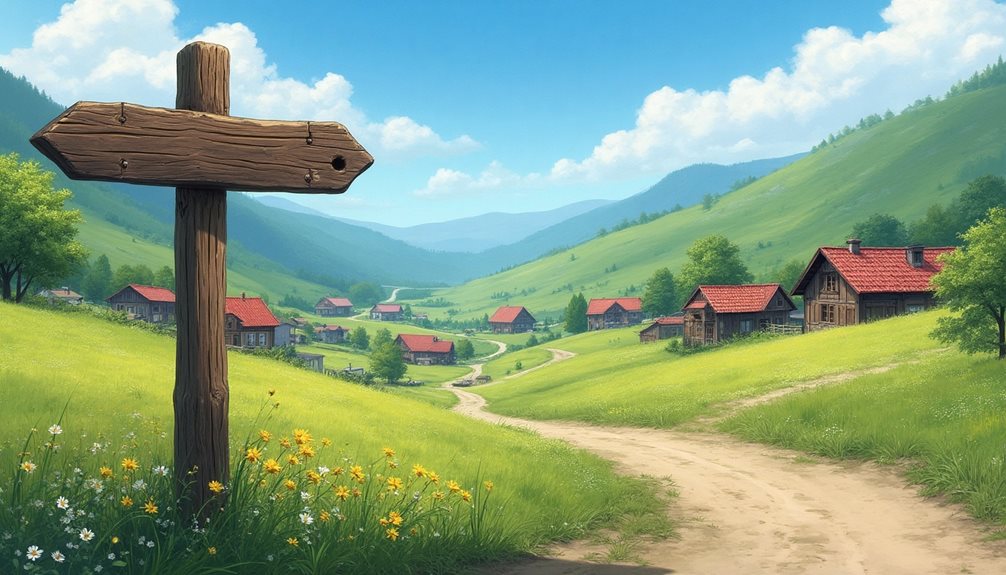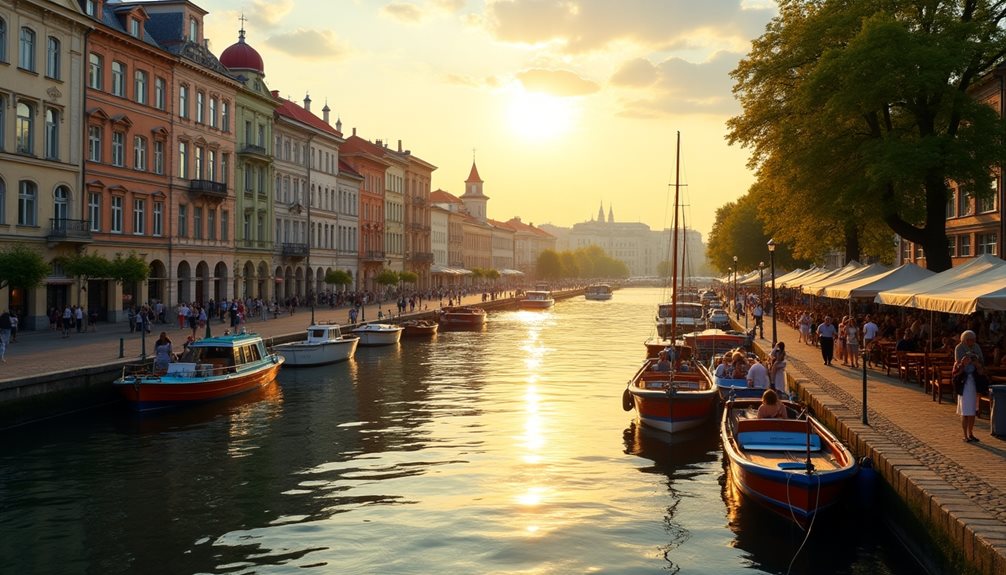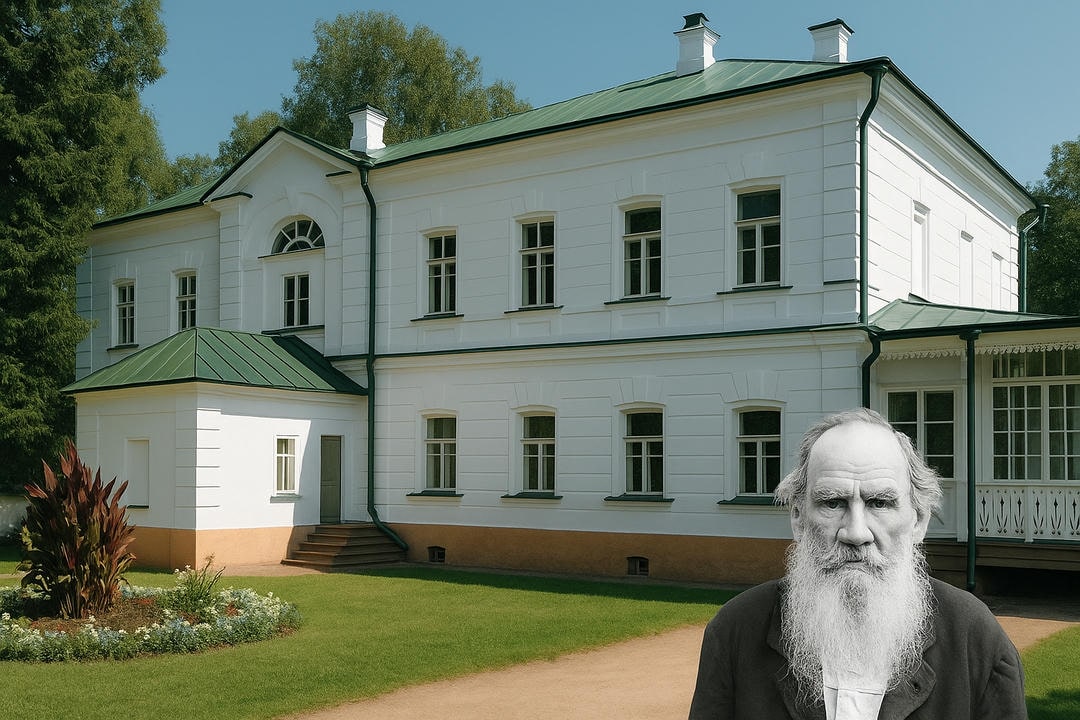You might wonder how the October Revolution of 1917, which promised “Peace, Land, and Bread,” could lead to the eventual collapse of the Soviet Union in 1991. Understanding the interplay between the initial fervor of Bolshevik ideals and the later disintegration under Gorbachev’s glasnost and perestroika policies reveals a tale of ambitious beginnings and ignominious ends. As you trace the journey from Lenin’s rise to the economic stagnation and nationalist movements that plagued the USSR, you’ll uncover the systemic flaws that sealed its fate. What key events bridged these two seemingly disparate moments in history?
Background of the October Revolution
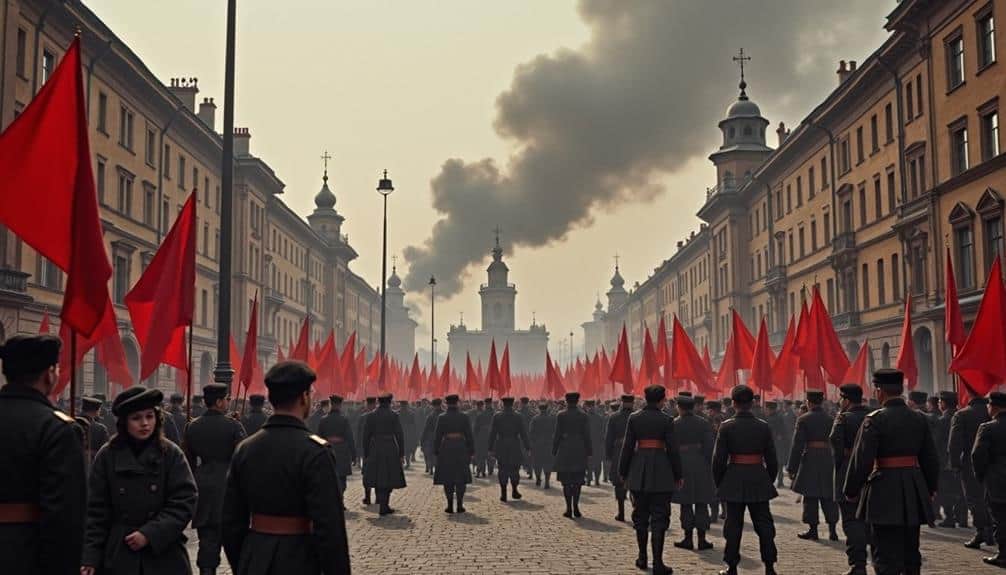
The October Revolution, a pivotal moment in Russian history, didn’t arise in a vacuum. You need to understand the complex backdrop that set the stage for such a seismic event.
Social unrest was rampant, fueled by widespread economic instability. Workers and peasants faced severe hardships, which highlighted the stark class struggle permeating Russian society. The imperial decline of the Romanov dynasty exacerbated these issues, with Tsar Nicholas II’s government proving increasingly ineffective and out of touch.
Political repression further ignited revolutionary ideology. The Tsarist regime’s crackdowns on dissent left many Russians disillusioned and desperate for change.
Military influence also played a significant role. The First World War drained resources and morale, leading to massive casualties and desertions, which diminished the army’s loyalty to the Tsar.
In a broader global context, other nations were experiencing their own upheavals and ideological shifts, which resonated with Russian revolutionaries. International socialist movements provided inspiration and support, amplifying the call for radical change.
Key Figures in the Revolution
Central to the October Revolution’s success were its key figures, whose leadership and vision propelled the movement forward. Lenin’s leadership was pivotal, providing strategic direction and articulating Bolshevik ideology. He masterfully used revolutionary propaganda to galvanize support and sustain momentum.
Trotsky’s role was equally crucial; his organizational prowess and command of military strategies ensured the Red Army’s effectiveness in crucial battles.
Women’s participation also played a significant role, as they were active in grassroots movements and demonstrated remarkable resilience. Their contributions helped in disseminating revolutionary ideas and bolstering support at the community level.
Revolutionary art and literature further amplified the movement’s message, appealing to a broad audience and fostering a shared sense of purpose.
International influence can’t be overlooked. The Bolsheviks drew inspiration from global revolutionary movements and adapted strategies that had succeeded elsewhere.
However, dissenting voices within the movement highlighted internal conflicts and differing visions for the future. These voices, while often suppressed, indicate the complexity and diversity of thought within the revolution.
Through a combination of strategic leadership, inclusive participation, and effective communication, these key figures collectively steered the October Revolution toward its historic outcome.
Events Leading to the October Revolution

While the contributions of key figures were monumental, understanding the events leading up to the October Revolution provides a comprehensive view of the movement’s momentum. The roots of the revolution lay in deep-seated class struggle and pervasive economic turmoil.
You’d see how the working class and peasants faced severe hardships, leading to widespread peasant discontent. Revolutionary propaganda played a crucial role in mobilizing these groups, fueling social unrest across the Russian Empire.
Political repression by the Tsarist regime exacerbated these tensions. The government’s harsh measures against dissent created a volatile atmosphere ripe for revolutionary ideas.
International tensions, particularly those arising from World War I, added to the instability. Russia’s military involvement in the war drained resources and brought about immense suffering, further deepening public dissatisfaction.
Social unrest was palpable, with strikes and protests becoming increasingly common. Economic turmoil, characterized by food shortages and inflation, made daily life unbearable for many.
This dire situation, combined with revolutionary propaganda, stoked the flames of rebellion. As you trace these complex layers of discontent and agitation, you’ll understand how the October Revolution emerged as an inevitable climax to years of mounting pressure.
Bolshevik Seizure of Power
Bolshevik leaders seized an unprecedented opportunity to capitalize on the chaos engulfing Russia in late 1917. By leveraging Bolshevik ideology, they emphasized the class struggle, presenting themselves as the champions of the proletariat.
You can see how they utilized revolutionary propaganda to sway public opinion and garner peasant support, which was crucial for their success.
Leadership rivalries within the Provisional Government weakened its ability to respond effectively, while the Bolsheviks, under Lenin and Trotsky, demonstrated clear and decisive leadership.
Their military strategies included the strategic occupation of key locations in Petrograd, such as the Winter Palace and communication centers, which was vital for power consolidation.
Urban uprisings, driven by widespread discontent, played right into the Bolsheviks’ hands. Workers, soldiers, and peasants, fed up with war and poverty, were ready to support a radical change.
The Bolsheviks’ promises of “Peace, Land, and Bread” resonated deeply with these groups, further solidifying their base.
Through meticulous planning and exploiting the existing turmoil, the Bolsheviks managed to overthrow the Provisional Government, marking a pivotal moment in the October Revolution and setting the stage for the establishment of Soviet rule.
Early Soviet Government Policies
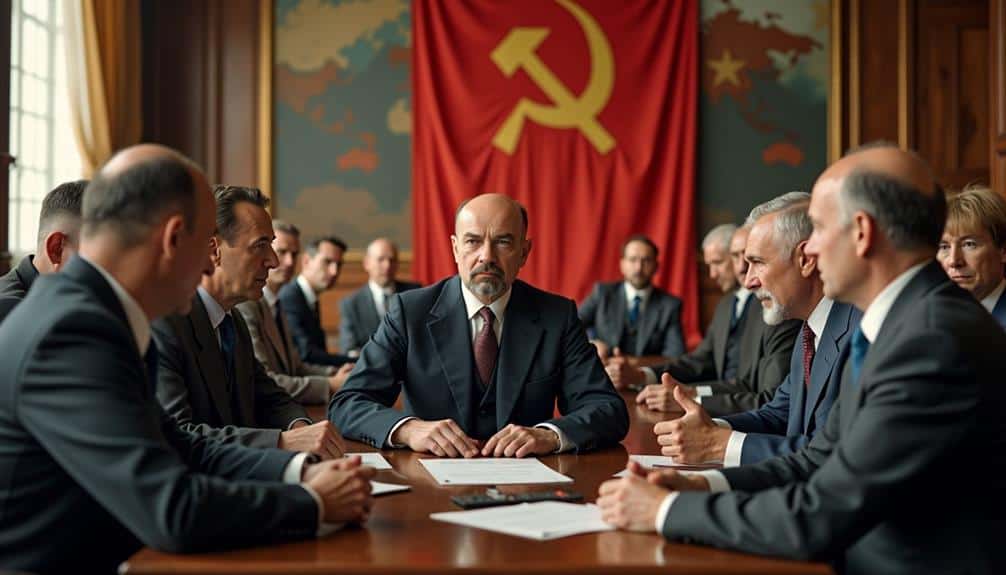
In the aftermath of their successful seizure of power, the early Soviet government swiftly implemented a series of transformative policies aimed at consolidating their control and reshaping Russian society.
War Communism, introduced during the Civil War, sought to centralize production and distribution, but it led to widespread famine and discontent. Recognizing the need for change, Lenin introduced the New Economic Policy (NEP) in 1921, which temporarily permitted private enterprise and market mechanisms to revive the economy.
Political repression became a tool to eliminate opposition, with the Red Terror targeting perceived enemies of the state. The Cheka, the Soviet secret police, played a crucial role in this campaign.
Bolshevik ideology also emphasized land reforms, confiscating estates from the nobility and redistributing them to peasants, a move aimed at gaining peasant support.
Industrialization efforts were initially fragmented but laid the groundwork for future economic strategies. Propaganda campaigns were essential in promoting Soviet ideals and maintaining public support.
The adoption of the Soviet Constitution in 1924 established the legal framework for the new state. These policies, while often harsh, were instrumental in solidifying Bolshevik control during a tumultuous period.
The Rise of Stalin
Amid the shifting political landscape of the early Soviet Union, Joseph Stalin’s ascent to power marked a significant turning point. You can see how Stalin’s purges were instrumental in consolidating his power, as he systematically eliminated political rivals and potential threats.
His Five Year Plans aimed at transforming the Soviet economy through rapid industrialization and collectivization of agriculture, reflecting his aggressive economic policies.
Stalin’s cult of personality played a crucial role in his regime, as propaganda portrayed him as an infallible leader, fostering an environment of unquestioned loyalty. This was intertwined with intense political repression, where dissent was met with brutal consequences, further solidifying his control.
Military expansion also became a priority under Stalin, aligning with his broader vision of a powerful Soviet state. Through these strategies, he effectively shifted the ideological foundation of the Soviet Union, emphasizing totalitarian control and state-led economic growth.
In analyzing Stalin’s rise, you’re examining a period marked by dramatic ideological shifts and ruthless power consolidation, laying the groundwork for significant future developments in Soviet history. His methods had far-reaching impacts, shaping the trajectory of the Soviet Union for decades to come.
Cold War Dynamics

Stalin’s consolidation of power and the establishment of a totalitarian regime set the stage for the Soviet Union’s pivotal role in the Cold War. The ideological conflict between communism and capitalism fueled an intense rivalry with the United States. Proxy wars became a common battlefield for this struggle, with conflicts in Korea, Vietnam, and Afghanistan serving as indirect confrontations between the two powers. Espionage activities, carried out by intelligence agencies like the KGB and CIA, further intensified the hostilities.
Both sides engaged in extensive military alliances, with NATO and the Warsaw Pact symbolizing the divided world. Economic competition was another front in this Cold War, as the USSR and the US vied to demonstrate the superiority of their respective systems.
Propaganda campaigns were employed to influence both domestic and international public opinion, shaping perceptions and hardening stances. Diplomatic tensions frequently brought the world to the brink of direct conflict, exemplified by the Cuban Missile Crisis.
Understanding these dynamics provides crucial insight into the broader historical context and the eventual dissolution of the Soviet Union.
Internal Strains and Reforms
The Soviet Union’s internal strains began to manifest through economic stagnation, political corruption, and social unrest, revealing cracks in the seemingly monolithic structure.
You’d notice that economic challenges grew as the centrally planned economy failed to keep pace with global advancements, leading to shortages and inefficiencies. This stagnation fueled public disillusionment, as citizens faced declining living standards.
Social unrest became more visible, with political dissent rising against the backdrop of a rigid, bureaucratic system. National movements gained momentum, as various ethnic groups within the USSR sought greater autonomy or independence.
These movements often highlighted the ideological splits within the Communist Party, further straining the Union’s cohesion.
Efforts to reform the system frequently ended in failure. Leaders attempted to introduce changes to address economic challenges and bureaucratic inefficiencies, but the deeply entrenched corruption and resistance from within the Party hindered meaningful progress.
This failure to effectively reform exacerbated public frustration and increased demands for change.
Gorbachev’s Policies

Introducing sweeping reforms, Mikhail Gorbachev sought to rejuvenate the Soviet Union through his policies of glasnost (openness) and perestroika (restructuring).
Gorbachev’s Perestroika aimed at economic restructuring, focusing on decentralizing the economy to improve efficiency and productivity. However, these changes exposed the Soviet economy’s deep flaws, leading to shortages and increased public discontent.
Gorbachev’s Glasnost encouraged transparency and freedom of information, which inadvertently unleashed criticism of the government and revealed corruption. This policy fostered significant social changes, as citizens became more vocal about their dissatisfaction.
Political reforms under Gorbachev included multi-candidate elections and reduced Communist Party control. While these changes aimed to modernize political structures, they also weakened central authority and bolstered the rise of nationalism in various Soviet republics.
Western influence played a critical role as Gorbachev’s openness policy allowed for greater cultural and ideological exchanges, highlighting the Soviet system’s inefficiencies compared to the West.
Gorbachev faced leadership challenges as his policies met resistance from hardliners within the Communist Party, further complicating governance.
Ultimately, Gorbachev’s policies catalyzed significant social and political transformations, but they also exposed and exacerbated underlying issues within the Soviet Union.
Dissolution of the Soviet Union
As Gorbachev’s reforms destabilized the Soviet Union, cracks within the federation grew increasingly apparent, leading to its eventual dissolution. Economic challenges compounded by political dissent and social unrest weakened the central authority.
You could see that soviet nationalism, once a unifying force, began to fracture under the weight of nationalist movements and ethnic tensions across the republics.
Leadership struggles emerged as Gorbachev’s policies of glasnost and perestroika encouraged more open criticism of the government. These ideological shifts created an environment ripe for political dissent.
Military conflicts, such as those in the Baltic states, exacerbated the situation, highlighting the Soviet Union’s inability to maintain control.
Foreign interventions, particularly from the West, further influenced the course of events. Western nations provided support to independence movements, increasing pressure on the Soviet regime.
In the end, the combination of these factors—economic challenges, political dissent, social unrest, nationalist movements, leadership struggles, ideological shifts, military conflicts, and foreign interventions—culminated in the dissolution of the Soviet Union in December 1991.
The once-mighty federation splintered into fifteen independent republics, marking the end of an era in global politics.

